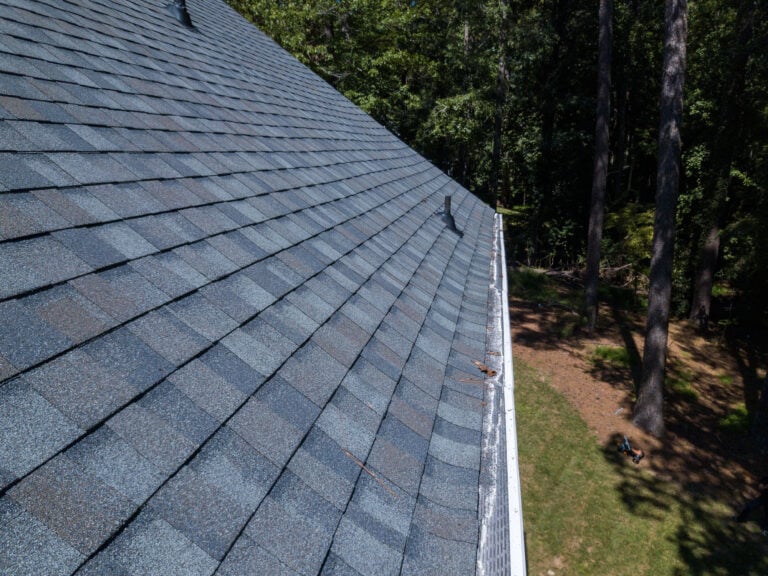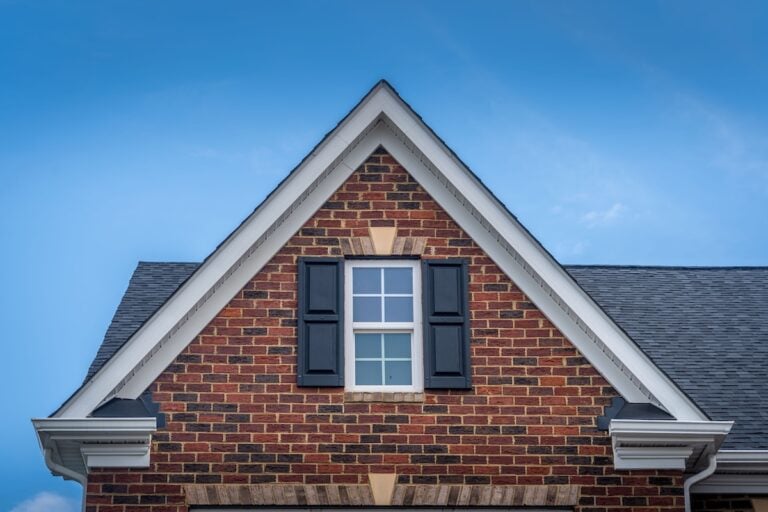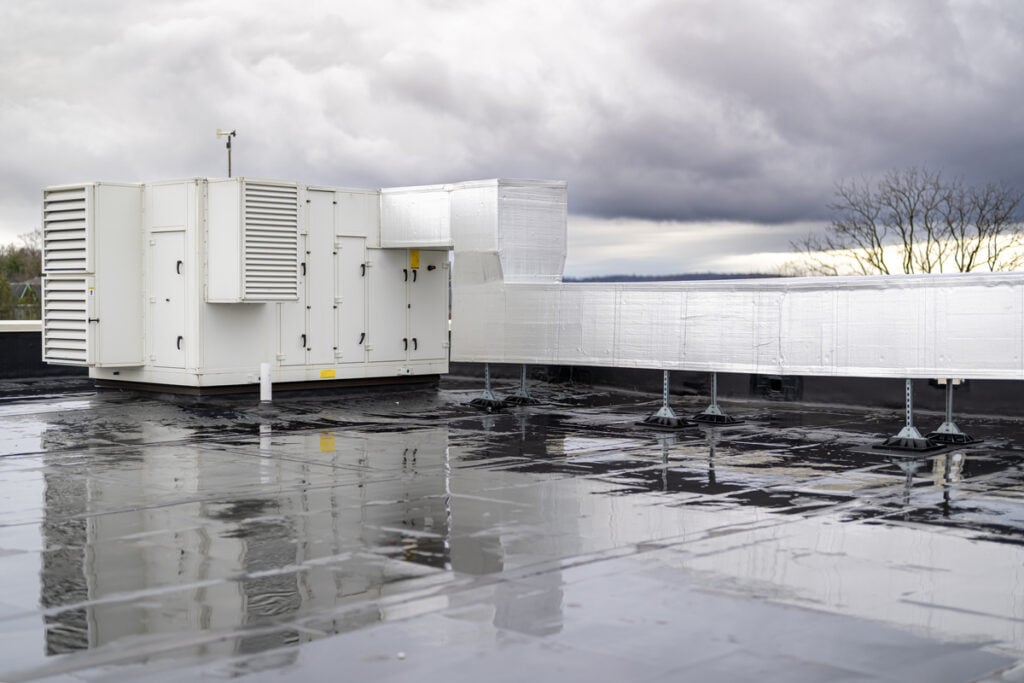
EPDM (Ethylene Propylene Diene Monomer) roofing is a popular choice for commercial properties. Known for its durability, longevity, and cost-effectiveness, EPDM roofing offers numerous benefits that make it a compelling option for building owners.
We’ll cover all of that more, by breaking down:
- The pros and cons of EPDM roofing
- Its costs
- Why you should consider it for your property
What is EPDM Roofing?
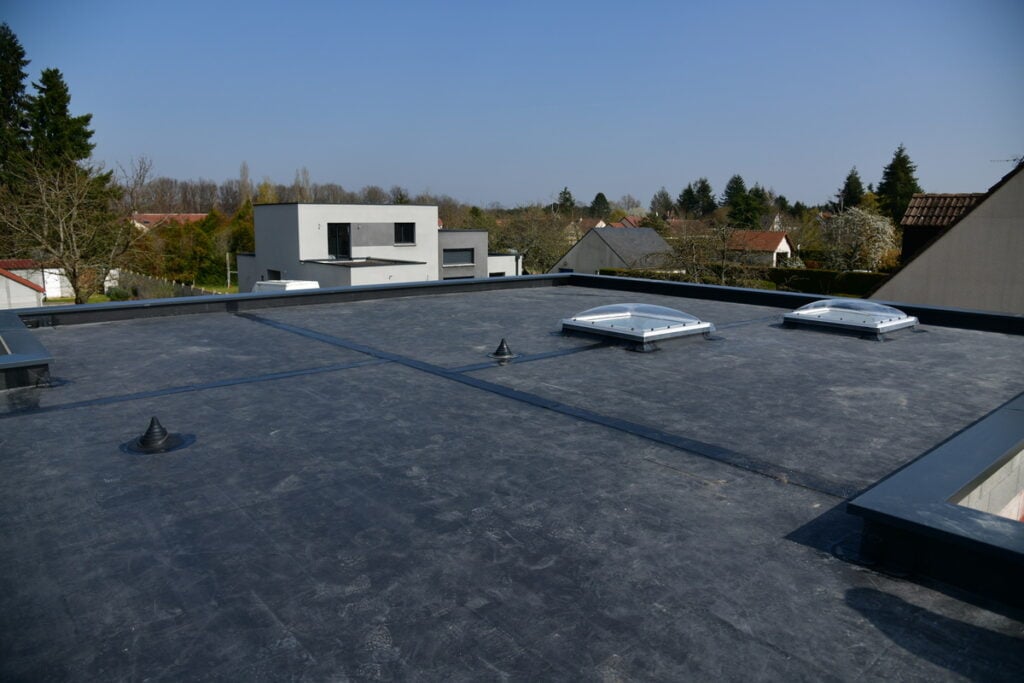
EPDM roofing is a type of single-ply rubber roofing membrane that is widely used in low-slope commercial buildings. Made from a combination of ethylene and propylene, EPDM membranes are typically black or white and are available in various thicknesses. This versatile material is praised for its ability to withstand extreme weather conditions and maintain its integrity over time.
👍 Pros of EPDM Roofing
- Durability: One of the standout features of EPDM roofing is its durability. This material is resistant to UV radiation, ozone, and extreme temperatures, making it an ideal choice for commercial properties in diverse climates. Additionally, EPDM is flexible, which allows it to expand and contract with temperature changes without cracking or splitting.
- Longevity: EPDM roofs have a long lifespan, often lasting between 25 to 30 years or more with proper maintenance. This longevity makes EPDM a cost-effective solution for commercial property owners, as it reduces the need for frequent replacements.
- Cost-Effective: Compared to other roofing materials, EPDM is relatively affordable. The initial installation costs are lower, and its long lifespan means fewer replacement expenses over time. Additionally, EPDM’s energy efficiency can lead to reduced heating and cooling costs, providing further savings.
- Easy Installation and Repair: EPDM roofing is relatively easy to install, which can reduce labor costs and installation time. Repairs are also straightforward, often requiring only adhesive and patches to fix minor issues. This ease of maintenance makes EPDM a practical choice for commercial properties.
- Environmentally Friendly: EPDM is a recyclable material, which makes it an environmentally friendly choice. Additionally, white EPDM membranes can reflect sunlight, reducing the urban heat island effect and lowering cooling costs.
👎 Cons of EPDM Roofing
- Aesthetic Limitations: While EPDM is available in black and white, its appearance may not be as visually appealing as other roofing materials. For commercial properties where aesthetics are a significant concern, this could be a drawback.
- Potential for Punctures: Although durable, EPDM can be susceptible to punctures from sharp objects or heavy foot traffic. Regular inspections and prompt repairs can mitigate this issue, but it’s something to be aware of.
- Adhesive Vulnerability: The adhesives used to install EPDM roofing can degrade over time, particularly in areas with extreme weather conditions. This can lead to seams coming apart, which may require repairs.
Cost of EPDM Roofing
The cost of EPDM roofing can vary based on several factors, including the thickness of the membrane, the size of the roof, and labor costs. On average, you can expect to pay between $4 to $8 per square foot for EPDM roofing installation. While this is a general estimate, it’s essential to obtain quotes from multiple contractors to get a more accurate cost for your specific project.
Durability and Longevity of EPDM Roofing
Durability
EPDM roofing is designed to withstand harsh weather conditions, making it one of the most durable roofing options available. Its resistance to UV radiation, ozone, and extreme temperatures ensures that it remains intact and functional for many years. Additionally, EPDM’s flexibility allows it to expand and contract with temperature changes, reducing the risk of cracks and splits.
Longevity
With proper maintenance, EPDM roofs can last between 25 to 30 years or even longer. This longevity is a significant advantage for commercial property owners, as it reduces the frequency and cost of roof replacements. Regular inspections and timely repairs can further extend the lifespan of your EPDM roof.
Why You Should Choose EPDM Roofing
There are lots of reasons to opt for an EPDM roofing system, including:
Energy Efficiency
EPDM roofing can contribute to your building’s energy efficiency. Black EPDM absorbs heat, which can help reduce heating costs during colder months. Conversely, white EPDM reflects sunlight, reducing cooling costs in warmer climates. This energy efficiency can lead to significant savings on utility bills.
Low Maintenance
EPDM requires minimal maintenance compared to other roofing materials. Regular inspections and occasional cleaning are usually sufficient to keep your EPDM roof in good condition. If repairs are needed, they are typically straightforward and cost-effective.
Versatility
EPDM is suitable for various commercial applications, including low-slope roofs, green roofs, and rooftop gardens. Its versatility makes it a popular choice for a wide range of commercial properties.
Proven Track Record
EPDM roofing has been used for decades and has a proven track record of performance. Its long history of successful installations and satisfied customers makes it a reliable choice for commercial property owners.
Installation of EPDM Roofing in 5 Steps
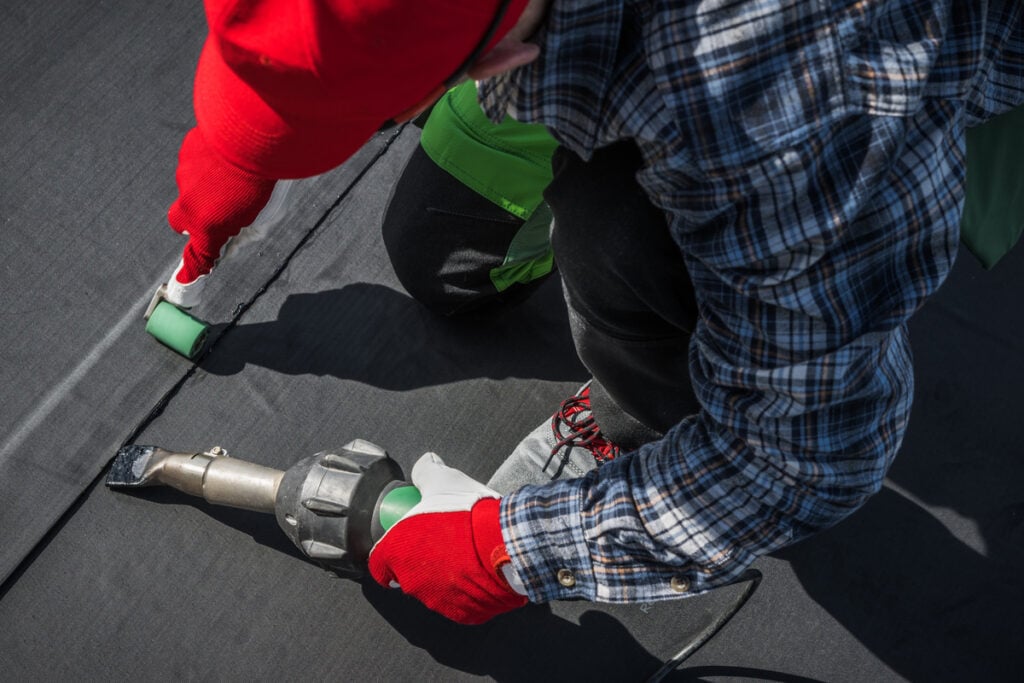
Ready to take the plunge and invest in EPDM? Here’s what you can expect from the installation process.
1) Preparation
The installation of EPDM roofing begins with thorough preparation. The roof surface must be clean, dry, and free of any debris or sharp edges that could damage the membrane. Any existing roofing material must be removed, and the surface should be inspected for structural integrity. Roof vents, drains, and any other protrusions should be identified and prepared for installation.
2) Laying the Membrane
Once the roof is prepped, the EPDM membrane can be rolled out over the surface. It’s important to allow the membrane to “relax” for about 30 minutes to minimize wrinkles and bubbles during installation. The membrane is then cut to fit the roof’s dimensions, ensuring that it extends slightly beyond edges and around penetrations to provide a watertight seal.
3) Adhering the Membrane
There are several methods to adhere the EPDM membrane to the roof, including fully adhered, mechanically fastened, and ballasted systems. In a fully adhered system, adhesive is applied evenly to the roof surface or the membrane. The membrane is then carefully laid into place and smoothed out to remove any air bubbles.
For mechanically fastened systems, screws and plates secure the membrane at the seams and other designated areas, adding extra reinforcement. In ballasted systems, the membrane is laid loosely and held in place by the weight of ballast materials, such as gravel or pavers.
4) Seaming and Flashing
The seams where membrane sheets overlap are a critical aspect of the installation. Seams are cleaned, primed, and bonded with seam tape or adhesive to form a tight, waterproof seal. Flashing is installed around roof penetrations, parapets, and other transitions to ensure a watertight connection.
5) Inspection and Finishing
After installation, the entire roofing system is inspected for any issues or imperfections. Edges are trimmed, and any protective measures, such as walk pads or additional ballast, are put in place. A final inspection ensures that the EPDM roof is securely installed and ready for years of performance.
By following these installation steps and using quality materials, you can ensure a durable and long-lasting EPDM roofing system for your commercial property.
How to Take Care of Your EPDM Roof
The best way to keep your roofing systems in great shape? Regular maintenance! Here are some of the easiest ways to ensure that your roof stays healthy.
- Regular Inspections: Conduct regular inspections of your EPDM roof to identify any potential issues early. Look for signs of damage, such as punctures, tears, or seam separations. Addressing these issues promptly can prevent more significant problems down the line.
- Cleaning: Keep your EPDM roof clean by removing debris, leaves, and dirt regularly. This prevents the buildup of organic matter, which can cause damage or block drainage systems.
- Prompt Repairs: If you notice any damage during your inspections, schedule repairs as soon as possible. Small issues, such as punctures or seam separations, can be easily repaired with adhesive and patches. Addressing these problems promptly can extend the lifespan of your EPDM roof.
- Avoid Heavy Foot Traffic: Minimize heavy foot traffic on your EPDM roof to prevent punctures and other damage. If access is necessary, use walk pads or other protective measures to reduce the risk of damage.
How Often to Schedule Inspections with a Trusted Contractor
Regular inspections are crucial for maintaining the integrity and longevity of your EPDM roof. It’s recommended to schedule inspections with a trusted contractor at least twice a year, ideally in the spring and fall. These inspections can help identify and address any issues before they become more significant problems.
In addition to biannual inspections, it’s also essential to schedule inspections after severe weather events, such as storms or heavy snowfall. These events can cause damage to your roof, and prompt inspections can help prevent further issues.
Commercial Roofing Expertise
EPDM roofing is a durable, cost-effective, and versatile option for commercial property owners. Its long lifespan, energy efficiency, and low maintenance requirements make it a popular choice for various applications.
Ready to experience the benefits of EPDM roofing for yourself? Contact Palladium today to schedule a consultation and get started on your roofing project. With our expert guidance and high-quality materials, you’ll have a reliable and long-lasting roof that protects your commercial property for decades.


